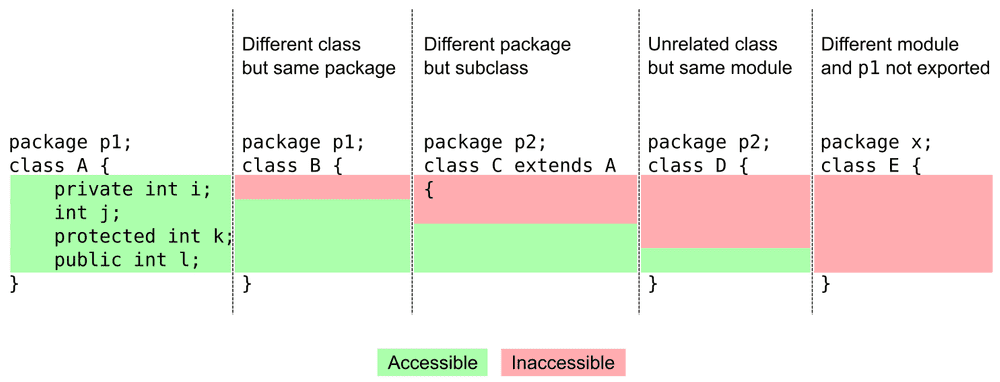What is the difference between public, protected, package-private and private in Java
In this tutorial we are going to learn about the differences between public, protected, package-private and private in Java.
Explanations
A private member (i) is only accessible within the same class as it is declared.
A member with no access modifier (j) is only accessible within classes in the same package.
A protected member (k) is accessible within all classes in the same package and within subclasses in other packages.
A public member (l) is accessible to all classes (unless it resides in a module that does not export the package it is declared in).
Which modifier to choose?
Access modifiers is a tool to help you to prevent accidentally breaking encapsulation(*). Ask yourself if you intend the member to be something that’s internal to the class, package, class hierarchy or not internal at all, and choose access level accordingly.
Examples:
A field long internalCounter should probably be private since it’s mutable and an implementation detail.
A class that should only be instantiated in a factory class (in the same package) should have a package restricted constructor, since it shouldn’t be possible to call it directly from outside the package.
An internal void beforeRender() method called right before rendering and used as a hook in subclasses should be protected.
A void saveGame(File dst) method which is called from the GUI code should be public.
